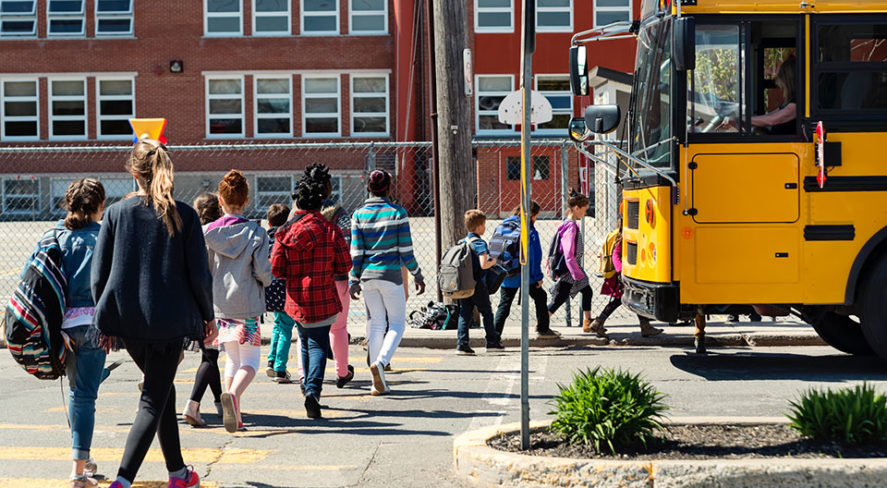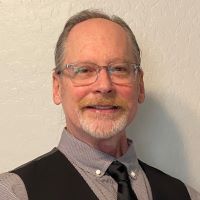School Security & Active Shooter Interdiction: A Q&A With Vince Riden


One of SIA’s top advocacy priorities and an issue area that impacts nearly all of us to some degree is that of school safety and security. It’s important to promote a safe learning environment for every student and protect the teachers, staff and visitors in our schools, and SIA appreciates the many talented security professionals who are working diligently each day to enhance the safety and security of our schools and mitigate active shooter threats.
In this Q&A, SIA spoke with Vince Riden, a longtime security industry professional with a passion for the issue of active shooter interdiction in schools, about his career in the security industry, challenges schools face in protecting against active shooter incidents and his vision for the future of school security.
What is your background in the security industry, and how did you come to be involved in school security specifically?
Vince Riden: My background in the security industry is now spanning almost 33 years. In my earliest days in the national capital region, earning my electrical journeyman’s license in 1989, I was working in schools as an electrician. I later landed an estimator’s position at a small family-owned fire alarm dealer/security integration firm and stayed employed within the “systems integrator” discipline, making strategic employment changes to larger and larger firms, all of which did school construction projects, gaining valuable experience, both in the office and in the field.
For 10 years I built schools or did remodel projects as a technician or team lead pulling wire, installing devices and racks full of equipment, commissioning, programming and demonstrating security, public address, communications, computer networks and audiovisual systems. I taught the teachers how to use these systems, taught the principals how to manage these systems and instructed county employees on how to maintain these systems. Multiple shooter events around the country made me start thinking what can I do myself, and I decided to leverage all my experiences into a single personal effort. In 2016 I began my developing my patent, USPTO #11125537 B2, essentially an active shooter interdiction system. It stops the bullets, interrupts the sightline, prevents the shooter from penetrating further into the building or even denies them entry, provides an impenetrable barrier between the innocents and danger and potentially captures a shooter in a confined area.
Given your specifying/consulting and architectural background, what are some common design elements of older school facilities you have seen which create challenges to work with when implementing school security solutions and trying to prevent active shooters?
VR: Common design elements of older schools are that older schools were not designed with crime prevention through environmental design (CPTED) concepts in mind, while no school ever has been designed and built to prevent or suppress a shooter.
Older schools typically have lower ceilings and smaller classrooms with no exits (just the single entry from the communicating hallway), and when they were built, bullet-resistant or proof doors were not invented yet. Many schools were designed with smaller buildings arranged in groups, maximizing the shape of the plot of land available to the project, with administration buildings attached to areas of public gathering (gymnasiums, auditoriums and cafeterias) – typically these are the most vulnerable areas. This design approach makes things difficult for natural surveillance and tactical response efforts.
Even some newer schools are designed and built “campus-style.” Very few, if any, schools are designed with CPTED principles being a high-priority, driving factor in the decision making. Security design concerns expressed are often overridden by budget constraints. Current design efforts of most buildings go through a CPTED evaluation as part of contemporary architecture design phase driven by caring architects, but CPTED needs updated to consider active shooters, ballistics materials and shooter suppression, to point out a few.
As a follow-up, how can schools update the physical structure of those facilities to overcome some common issues, particularly low-hanging fruit type of school security issues?
VR: As far as updating physical structure of school facilities goes, there are always things that could be done but are constrained by budgets and feasibility. A major transformation is happening in the school security domain, and it is inspiring to see it. Low-hanging fruit would be things that are happening now, like the recognition of and elimination of cheap, ineffective, code-violating devices stuck on doors to impede their opening, and the replacement of these with code-compliant devices; focused training of all staff on safety, first aid, and CPR and emergency response procedures; training on existing public address; mass notification systems; and – inexpensive but effective – simple static signage posted everywhere (illustrating how to help others, to stay calm and focused, first aid/CPR, etc.) during an emergency.
Some trainings initially established as a response procedure like “Run, Hide, Fight” are now being identified as ineffective, but nothing has been introduced yet to supplant this concept.
One of the most effective things a school can do to improve existing physical structure vulnerabilities is to have their site evaluated by a professional providing a security audit (written report) with suggested mitigation strategies.
At the top of that list (at all schools) – have at least one school resource officer. More is better. They can coordinate on behalf of the schools with local SWAT and police forces for a myriad of reasons and provide “how-tos” assisting school administrators, staff, students and parents. School resource officers are vital to school safety. The National Association of School Resource Officers is finally being recognized as the hero it has always been as a matter of common sense.
Second on that list: good high-definition or 4K cameras surveilling exterior areas just outside entrance doors (and limiting daily entry to one or two locations, staffed) with video analytics set up to recognize weapons, unusual objects and nontypical human behavior that activate alarms, then respond to these alarms effectively by someone with a radio investigating with eyes on. Also, (inexpensive) post-static signage with clear messaging on all exterior entrances and interior walls. Motorola/Avigilon cameras have native interoperability, perfect for this application.
Third on the list: having handheld radios for the resource officer(s) and for staff increases communications to real time during the initial stages of an event and supports a safer, faster mitigation and connection with law enforcement.
Fourth on that list, require all who enter – clear backpacks. Yes, a gun or knife can still be wrapped in a hoodie or T-shirt inside a clear backpack, but these should become the standard anyway.
Besides the more common security risks that schools face, what do you think the biggest challenges are in addressing active shooter threats in schools?
VR: As I see it, the biggest challenge to school security we face includes three things: lack of proper funding, with some funding dedicated to security upgrades, and with respect to students, a lack of focus on the bullying of others and the effects of social media on students. It is undeniable that these things have a dramatic negative influence on students, particularly kids who are not popular or do not fit in. Historically, several shooters have been socially awkward teens seeking revenge and aspiring to notoriety given to previous shooters. The former assistant FBI director recently acknowledged that this notoriety incentivizes mass shootings.
You’ve publicly said that there needs to be a national center for active shooter interdiction. What’s your vision there for what a center, group or information clearinghouse could be?
VR: I did post that on LinkedIn. Not that I want more government, but the information clearinghouse concept is thought to provide a common “thread the needle” through a wide range of currently disconnected, disparate sources of information and even currently unregulated industries.
The clearinghouse would establish a benchmark source of quality, reliable information on historical active/mass shooter events, best practices, emergency procedures templates, how-to guides and professional competency, all related directly or indirectly to active/mass shooter interdiction. This will close multiple existing gaps, providing alignment between them, like connecting architecture design best practices (that adopts a well-maintained, constantly improved CPTED updated by the security industry) to a currently unregulated ballistic materials industry where competency certifications could be required for designing buildings with these materials at the architecture “design table,” and certifications could be required to install these materials in the field. Also tying the security industry (who should be vigilantly updating CPTED and other doctrines of safety and security) into the mix, and the tracking of legal industry trends relating to active/mass shooters, tort, case law and intellecutal property law trends related to active shooter mitigation technology, and tracking the psychology/mental health industry trends with a focus on school-age children, along with casualty insurance and underwriting trends, as a start. Then there are advocacy, outreach, national campaigns, etc.
In my opinion, CTED concepts are in need of updating to consider active shooters and mitigation strategies, and the ballistics materials industry needs to be brought into alignment with all other disciplines in the design process so we can create safer structures more efficiently. Active shooter prevention is not limited to physical security – it is also 50% mental and emotional health prevention programs, and better parental engagement and antibullying efforts. A national, federally funded antibullying campaign and a parental involvement “Can your kids access your guns?” campaign similar to “See Something, Say Something” would be better than doing nothing.
We need to stem the tide of active shooters, and until that happens, they will always exist.
The views and opinions expressed in guest posts and/or profiles/Q&As are those of the authors or sources and do not necessarily reflect the official policy or position of the Security Industry Association.
